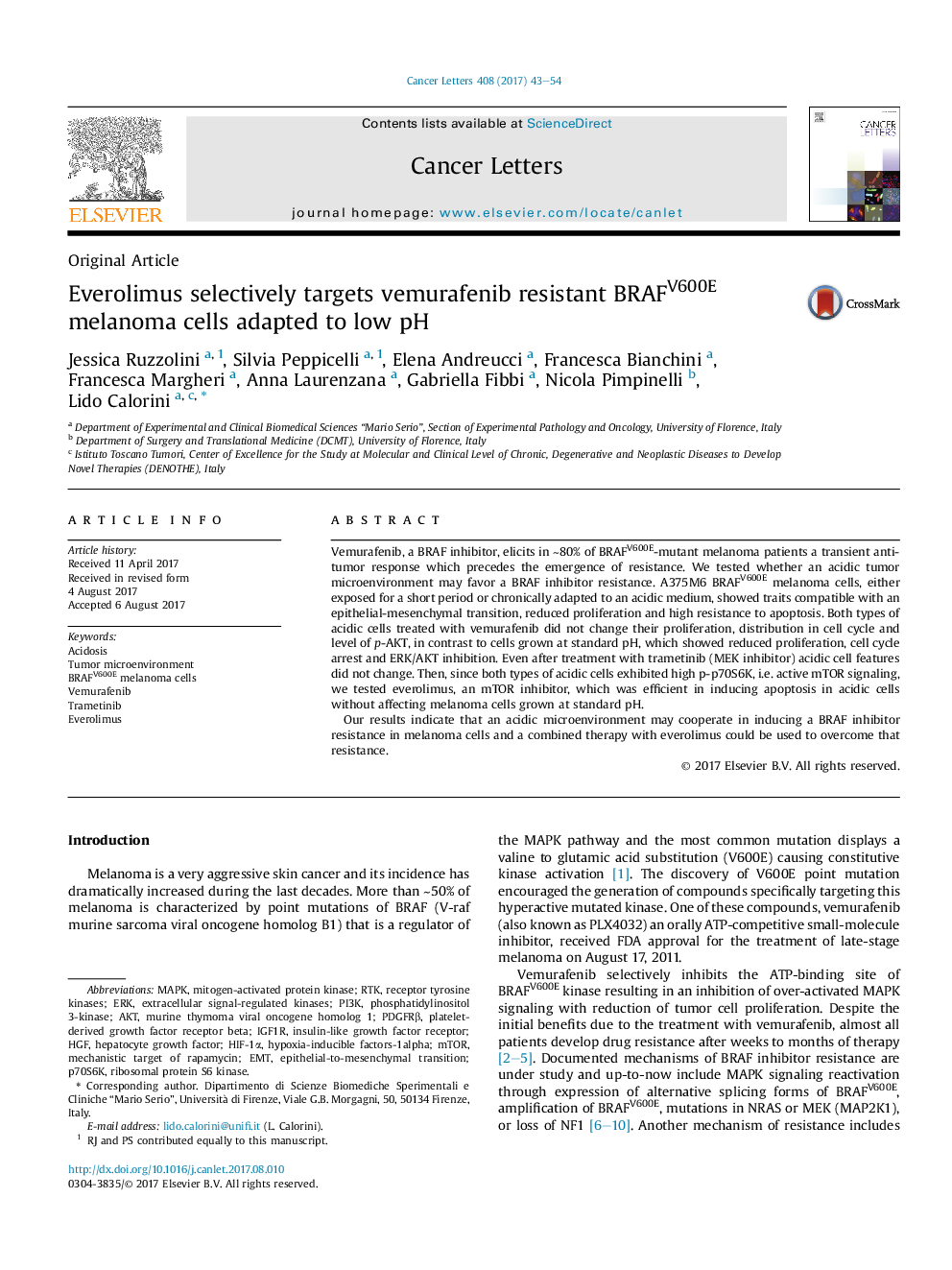| Article ID | Journal | Published Year | Pages | File Type |
|---|---|---|---|---|
| 5525302 | Cancer Letters | 2017 | 12 Pages |
â¢Acidic melanoma cells undergo an EMT profile resistant to pro-apoptotic agents.â¢Acidic melanoma cells express a vemurafenib-trametinib resistant character.â¢Acidic melanoma cells show a conserved pAKT signal transduction pathway after vemurafenib treatment.â¢Acidic melanoma cells can be targeted with everolimus, a mTOR inhibitor.
Vemurafenib, a BRAF inhibitor, elicits in â¼80% of BRAFV600E-mutant melanoma patients a transient anti-tumor response which precedes the emergence of resistance. We tested whether an acidic tumor microenvironment may favor a BRAF inhibitor resistance. A375M6 BRAFV600E melanoma cells, either exposed for a short period or chronically adapted to an acidic medium, showed traits compatible with an epithelial-mesenchymal transition, reduced proliferation and high resistance to apoptosis. Both types of acidic cells treated with vemurafenib did not change their proliferation, distribution in cell cycle and level of p-AKT, in contrast to cells grown at standard pH, which showed reduced proliferation, cell cycle arrest and ERK/AKT inhibition. Even after treatment with trametinib (MEK inhibitor) acidic cell features did not change. Then, since both types of acidic cells exhibited high p-p70S6K, i.e. active mTOR signaling, we tested everolimus, an mTOR inhibitor, which was efficient in inducing apoptosis in acidic cells without affecting melanoma cells grown at standard pH.Our results indicate that an acidic microenvironment may cooperate in inducing a BRAF inhibitor resistance in melanoma cells and a combined therapy with everolimus could be used to overcome that resistance.
